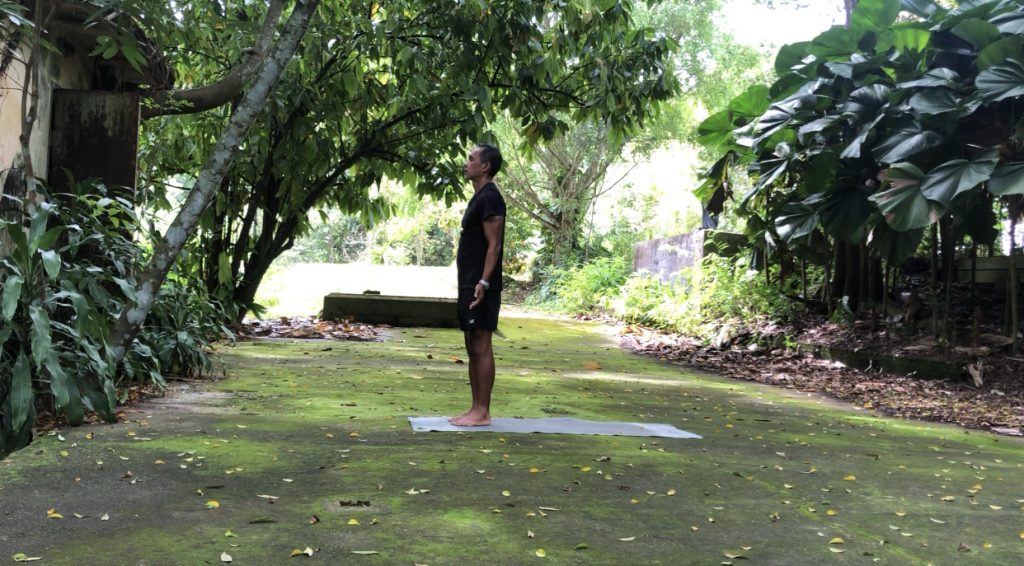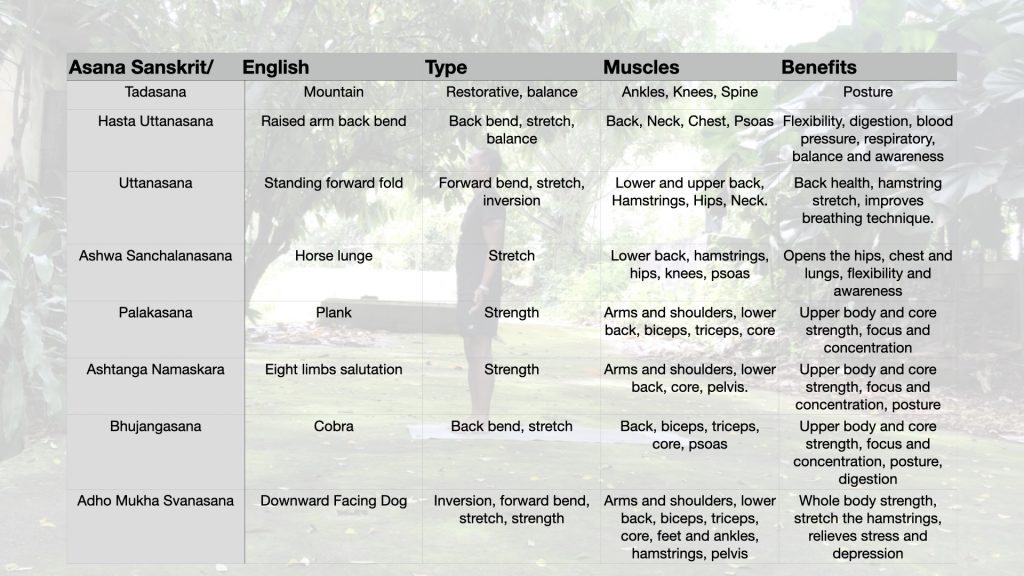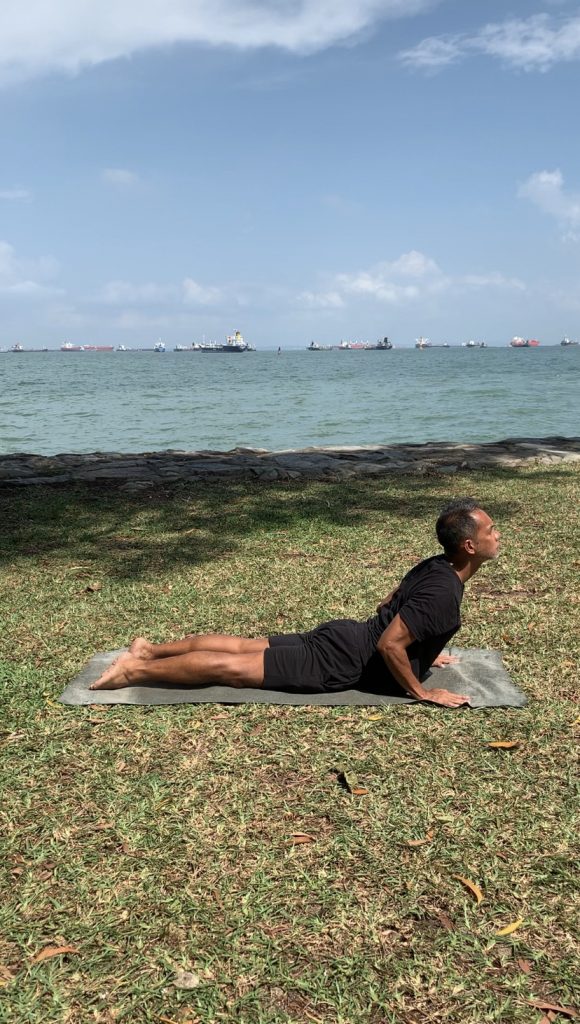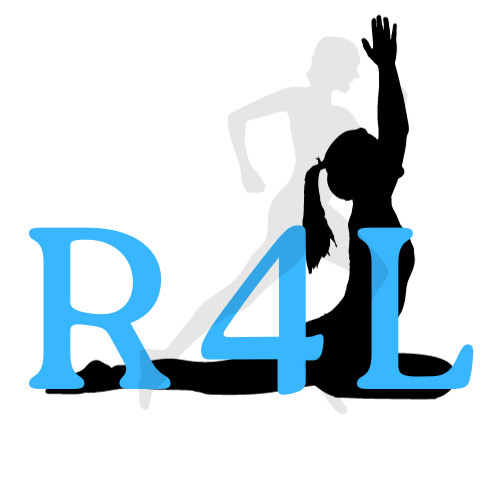The Sun Salutation, or the Surya Namaskar in Sanskrit is a sequence of asanas performed in a flow. Surya means the sun and namaskar can be translated as prayer or meditation or in this case salutation.
The sun salutation is an ancient yogic tradition of worshiping the rising or setting of the sun. If the day and night were like breathing, dawn and dusk would be the pause between the inhalation and exhalation (kumbaka) and the perfect time for reflection, meditation, or yoga practice.
There are many variations of the sun salutation and more variations are being thought of and taught to students everyday by innovative yoga instructors. There are however three classical sequences that a traditional practitioner are taught and will certainly know and practice on a regular basis. These are the classical Hatha sun salutation, the Ashtanga 1 and Ashtanga 2 sun salutations. I teach these 3 classics in my classes and throw in several variations as well.

There are many benefits of the sun salutation, to me, however, it is the mobility it restores, the strength it builds and the calmness I feel, that makes the sun salutation a daily must do. Although the traditionalists will say that we salute the sun at dawn or dusk, I perform it at any time during the day, for the sun is with us all day.
The classical Hatha sun salutation is a sequence of 12 poses, beginning and ending in Tadasana, a restorative and reflective standing pose. I describe it as waves of movements, one pose melding into the next in poetic balance and harmony of mind, movement and breath. Each transition is accompanied by inhalation or exhalation, harmonising movement and breath. Each movement should be mindful and deliberate. A practitioner will usually perform several cycles, 6 as a minimum, 12 is the normal.

You will see in the visual, the benefits of the each of the poses, but the benefits of the Surya Namaskar is greater than the sum of its parts. The dynamic waves of movement is perfect for a warmup when performed gently. Performed in a high tempo and cadence, the Surya Namaskar can be a cardio workout, similar to a short tempo paced run. Performed in mid tempo, holding the poses for between 8-12 breaths, the Surya Namaskar can be a full body strength session. Performed in a low tempo, holding the main poses for longer than 12 breaths, the Surya Namaskar can be a restorative stretch session where the muscles are allowed to regain their elasticity. Such is the versatility of the Surya Nasmaskar, by varying the tempo, cadence and hold, a yoga practitioner can be primed for a more intense workout, or get a cardio fix, or build strength or even recover from a previous intense workout in a stretch session.
The waves of movement, can make you arrive in a meditative state. As the waves becomes ingrained, as you harmonise your movement with your breath, allowing the body to take over, you will find calmness. Freeing thoughts from your mind, losing yourself for a few minutes as you perform several cycles and restoring and recharging your spiritual battery.
Watch the video to see how the classical Hatha sun salutation is performed.
Click here to see a detailed slide show and video on how to perform the Surya Namaskar
Come Surya Namaskar with me. Learn the classical hatha sun salutation and the Ashtanga 1 and 2 flows with me.

One of the hardest thing to do, is to disrupt yourself. Everyone loves the familiar even if it does you no good.
Ka
We coach you to be your better, healthier, happier self!

One thought on “A Salute to the Sun that energises, and calms.”